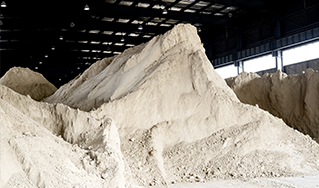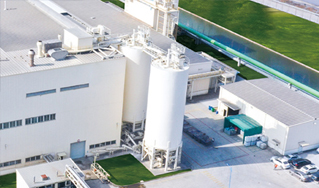Desulfurization gypsum, also known as flue gas desulfurization gypsum, sulfur-removal gypsum, or FGD gypsum, shares the same primary component as natural gypsum, which is calcium sulfate dihydrate (CaSO4·2H2O), with a content of ≥93%. Desulfurization gypsum is a by-product of the FGD process, which is a technique for removing sulfur dioxide (SO2) from flue gas produced by burning coal or oil. In this process, limestone-lime is ground into slurry, and the flue gas containing SO2, after passing through a dust collector, is washed with the slurry in an absorber tower to remove SO2. The reaction between limestone slurry and SO2 produces calcium sulfate and calcium sulfite, with the latter being oxidized to form calcium sulfate, resulting in industrial by-product gypsum known as desulfurization gypsum. This gypsum is widely used in industries such as construction materials.

The coal-fired power plant is an integral part of China's electricity production, making significant contributions to the country's economic development. Thermal power generation is a crucial form of electricity generation in China, accounting for over 80% of total electricity production. In recent years, environmental protection measures during the operation of thermal power plants have become a focal point of attention across society. To substantially reduce sulfur dioxide emissions from coal-fired power plants, desulfurization technology has been widely applied in most of these plants Due to the high sulfur content in China's coal, averaging between 1% to 2%, newly constructed coal-fired power plants approved by the National Development and Reform Commission since 2003 are required to install flue gas desulfurization devices if the sulfur content of the coal exceeds 0.7%. Existing coal-fired power plants are also required to gradually install flue gas desulfurization devices. Considering the sulfur content of Chinese coal, it is estimated that after 2020, nearly one billion tons of desulfurization by-product - desulfurization gypsum - will be generated annually. Therefore, the comprehensive utilization of desulfurization gypsum has become an urgent task.
Compared with natural gypsum, desulfurization gypsum exhibits consistent hydration kinetics and coagulation characteristics. Its main component is calcium sulfate dihydrate, with higher purity than natural gypsum. It has uniform fineness, eliminating the need for grinding processes and reducing costs. With suitable drying and calcination equipment, desulfurization gypsum can fully meet the requirements of construction gypsum. It can be widely used in cement, building products, and other emerging building materials. Developed countries have effectively addressed technical challenges such as transportation, drying, modification, and application of desulfurization gypsum. The gypsum industry in these countries has extensively adopted desulfurization gypsum, and the application technology is relatively mature.





















